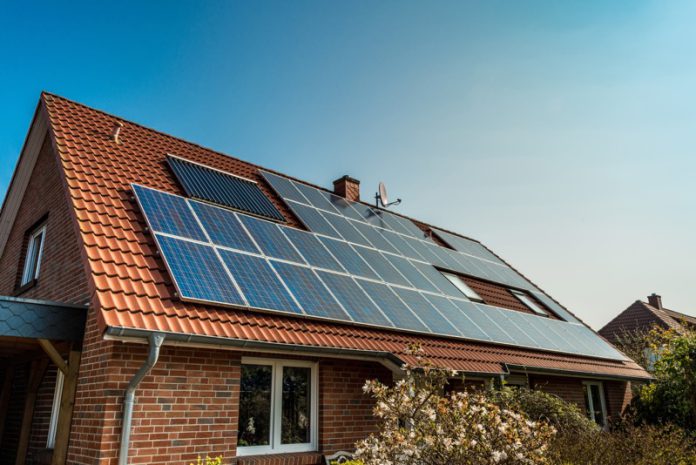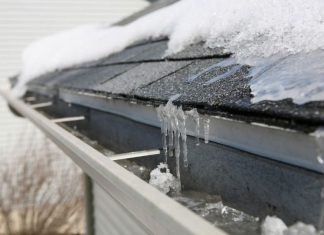These days there is a lot of talk about what governments and big businesses are doing regarding the climate crisis. But have you ever considered how you can fight the growing problem of climate change? Problems like rising global temperatures and an increase in droughts seem too big to face as an individual. But taking even small steps in your home and neighborhood can make a positive impact.
The good news is that many of the actions you can take to care for the environment also care for your wallet. Initiatives such as reducing energy usage don’t just cut back on carbon emissions, they save you money on your monthly utility bill.
As a homeowner, there are some concrete steps you can take that can make a positive mark on the climate crisis. For example, you can decrease energy use through lowering (or raising) your thermostat or installing thermal shades. To reduce the harmful emissions caused by decomposing food waste, consider composting. You can also regularly recycle plastic bottles and aluminum cans. Consider how many of the following four ways to combat climate change you can begin doing today.
1. Adopt Renewable Energy Sources
Renewable energy for residential areas can come in various forms, but the most common is solar power. Solar panels capture energy from the sun to provide power for your home. Solar energy is renewable and helps reduce your household’s carbon footprint. Using solar power reduces dependence on fossil fuels that can be harmful to the environment. Another benefit of doing a solar installation: It can increase the value of your home!
Other less common sources of renewable energy for the home include geothermal heat pumps and wind energy systems. Geothermal heat pumps use the ground as a source for heat and are typically more efficient than traditional heat pumps. While they have more requirements for use than solar panels, wind energy systems are also effective at reducing carbon emissions. They do, however, require at least an acre of land and an area with consistent winds of at least 10 m.p.h.
2. Invest in Energy-Efficient Upgrades
Making energy-efficient upgrades not only fights climate change, it reduces your energy bill and can earn you tax credits. Switching to an Energy Star heat pump and hot water heater, for example, can save you around $300 annually. Make sure your attic is well insulated so you can reduce energy consumption by not running your air conditioner as much in the summer. Heat loss is greatest in the attic, so insulating thoroughly will benefit you during colder months as well. To stop drafts, caulk gaps in and around windows and doors and use weatherstripping as necessary.
Adjusting your thermostat even just a degree or two can make a big impact as well. In peak summer and winter months, carbon emission skyrocket because heating and cooling homes takes so much energy. Compromising a few degrees in those seasons can help reduce both emissions and energy costs. Make even greater adjustments during the hours you’re away from home so energy isn’t wasted heating or cooling empty space. Consider adjusting the house temperature by 10 degrees when you’re out; today’s smart thermostats can return temps to normal before you get back.
3. Use Sustainable Landscaping Practices
There are countless ways to care for your landscaping in a way that also cares for the environment. Use organic mulch around trees, flower beds, and other landscaped areas to prevent the need for harmful weed-killing chemicals. Mulch provides a natural barrier that prevents weeds from growing. Use rain barrels to collect rainfall and use it to water your garden. Help the declining bee population by planting flowers that will attract pollinators like bees and butterflies.
Lawns are not naturally eco-friendly, since turf grasses are not typically native grasses. You may decide to let more native plants decorate your yard. Some homeowners choose to downsize and convert their lawns to permeable hardscapes. This method allows for water to seep into the soil, preventing runoff. Creating lawns and landscape areas that control erosion prevents wastewater pollution and maximizes the use of rainwater.
4. Engage Your Community
A great resource that all homeowners have in fighting climate change is their neighbors! Spreading the word about your personal efforts can influence others. Team up with neighbors to swap ideas on how to make your homes more energy efficient. If possible, commute with co-workers to reduce carbon emissions from automobiles. Sharing food from your respective gardens is a great way to not only eat healthy, but also cut back on some trips to the grocery store.
When it comes to shopping for food, buy local. Find grocers that offer sustainably sourced meat and produce from nearby areas. This can help cut back on the massive amount of emissions produced by transportation at big box retailers. Also, plant trees! Not only do trees reduce carbon dioxide in the air, they provide excellent shade that can help reduce your energy costs.
These are just some of the practical ways you can play your part in combating climate change. It’s also key to know what your local lawmakers are doing. What policies are they supporting to help reduce carbon emissions? What are they doing to provide more affordable ways for homeowners to save energy? Be informed on climate action taking place locally, nationally, and globally and do your part to push for change.













